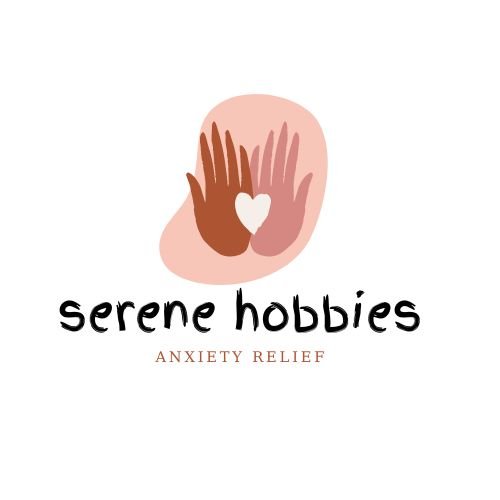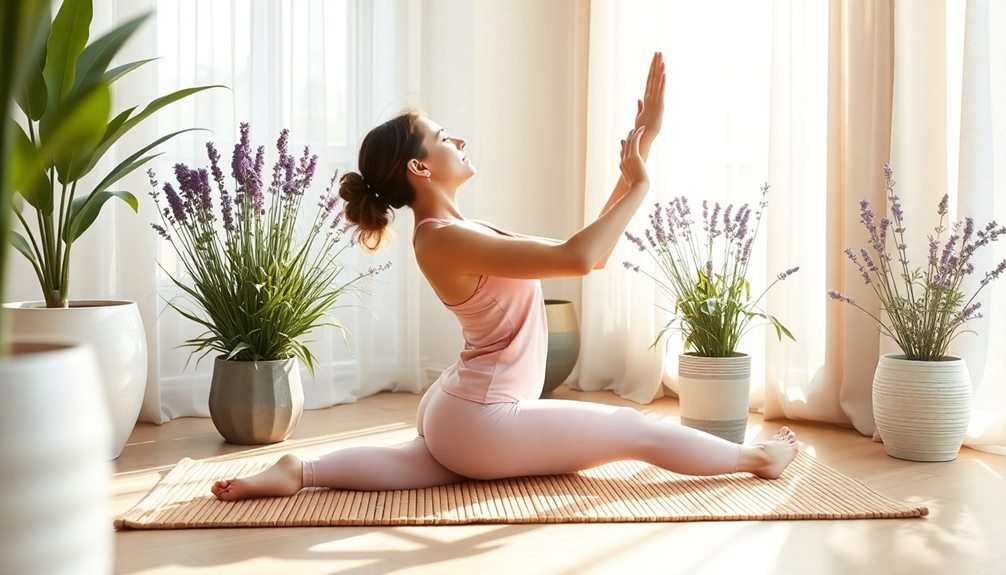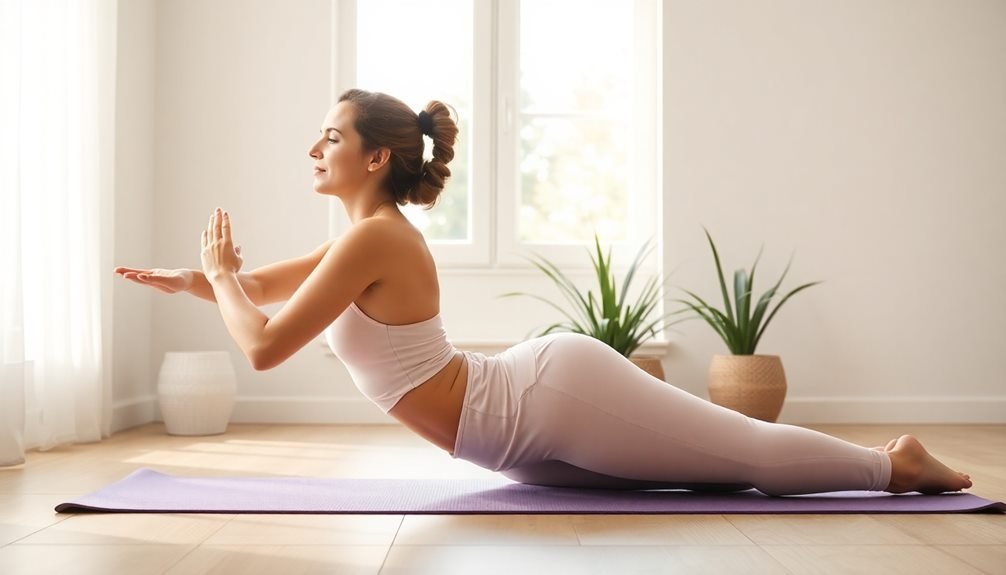Clay art journaling combines sculpting and journaling to help you manage stress and anxiety. You'll express emotions through tactile clay work, creating three-dimensional pieces that reflect your inner world. Start with air-dry or polymer clay, basic tools, and a journal. Experiment with colors, textures, and symbolism to convey your feelings. Focus on the process rather than the final product, allowing yourself to explore freely. Incorporate mindfulness techniques as you work, grounding yourself in the present moment. Regular practice can provide a powerful outlet for emotional release and self-reflection. Dive deeper to reveal the full potential of this unique stress-relief technique.
Understanding Clay Art Journaling

In recent years, clay art journaling has emerged as a powerful form of creative expression and stress relief. This unique practice combines the tactile nature of clay sculpting with the reflective process of journaling, offering a multisensory approach to self-expression and emotional release.
Unlike traditional journaling, clay art journaling allows you to physically shape your thoughts and feelings into three-dimensional forms. You'll use various clay types, such as air-dry or polymer clay, to create small sculptures, symbols, or abstract shapes that represent your emotions, experiences, or goals.
These clay pieces can be incorporated into a physical journal or kept separately as a collection of meaningful objects.
The beauty of clay art journaling lies in its versatility and accessibility. You don't need artistic skills to benefit from this practice. It's about the process, not the final product.
As you work with the clay, you'll engage in a meditative state, focusing on your inner world and translating it into tangible forms. This hands-on approach can help you process complex emotions, gain clarity on personal issues, and reduce stress by providing a creative outlet for your thoughts and feelings.
Benefits for Anxiety Management
Tranquility awaits those who explore clay art journaling as a tool for anxiety management. This tactile practice offers a unique avenue for self-expression and emotional release, helping you tackle anxious thoughts head-on.
As you mold and shape the clay, you're physically manipulating your worries, giving them form and making them tangible.
Clay art journaling engages your senses, grounding you in the present moment. The cool, smooth texture of the clay and the rhythmic motions of sculpting can calm your racing mind and lower your heart rate.
You'll find yourself focusing on the task at hand, naturally practicing mindfulness without forced effort.
This creative process also serves as a non-verbal outlet for complex emotions. When words fail, your clay creations can speak volumes about your inner state.
You'll develop a visual language for your feelings, making it easier to recognize and process them.
Over time, you'll build a collection of clay entries that serve as a tangible record of your emotional journey, allowing you to track your progress and identify patterns in your anxiety triggers.
Essential Tools and Materials

For your clay art journaling journey, you'll need a few key tools and materials to get started. First, choose a clay type that suits your needs. Air-dry clay is convenient and doesn't require baking, while polymer clay offers vibrant colors and durability.
You'll also need a smooth, non-porous work surface, such as a ceramic tile or glass cutting board. Essential tools include a rolling pin or acrylic roller for flattening clay, and various sculpting tools like rubber-tipped styluses, needle tools, and clay shapers for creating textures and details.
Don't forget a sharp craft knife for cutting clay and a ruler for precise measurements. To add color and texture to your clay art journal pages, consider acrylic paints, alcohol inks, or mica powders. Stamps, stencils, and texture mats can create interesting patterns and designs.
You'll also need a strong adhesive, like E6000 or a two-part epoxy, to attach clay elements to your journal pages. Lastly, invest in a good-quality mixed media journal with sturdy pages that can withstand the weight of clay elements.
With these tools and materials, you'll be well-equipped to begin your clay art journaling practice.
Creating Your Clay Journal
Creating your clay journal is an exciting journey-starter that allows you to explore your creativity and emotions through tactile expression.
Begin by choosing a theme or concept for your journal. This could be based on emotions, seasons, or personal experiences. Next, decide on the size and shape of your journal pages. You can create individual tiles or a bound book-like structure.
Start sculpting your first page by rolling out a slab of clay to your desired thickness. Use tools to add texture, patterns, or impressions that relate to your theme. Incorporate words or symbols by pressing letter stamps or carving directly into the clay.
Don't forget to leave space for future additions like paint or collage elements. As you progress, experiment with different clay techniques such as coiling, pinching, or building relief sculptures. Layer colors and textures to create depth and interest.
Basic Sculpting Techniques

Mastering basic sculpting techniques is essential for creating expressive clay art journal pages. Start by learning to roll, pinch, and coil clay. Roll out flat sheets for backgrounds or cut-out shapes. Pinch small pieces to form organic elements like flowers or pebbles. Create coils by rolling clay between your palms, then use them for borders or 3D text.
Practice texturing techniques using various tools. Press rubber stamps, lace, or natural objects into soft clay for interesting patterns. Use a toothbrush or fork to create fine lines and scratches. Combine smooth and textured surfaces for visual contrast.
Experiment with layering and relief work. Build up areas by adding thin clay slabs or small shapes. Carve into the clay surface to create depth and shadows. Try bas-relief techniques by pressing objects partway into the clay, then removing them to leave an impression.
Don't forget to blend and smooth edges where needed. Use a slightly damp finger or a clay tool to create seamless shifts between elements.
As you practice these techniques, you'll develop your unique style for clay art journaling.
Incorporating Mindfulness Into Clay Work
While honing your sculpting skills is important, clay art journaling can also be a powerful tool for mindfulness. As you work with clay, focus on the sensations in your hands and fingers. Notice the texture, temperature, and malleability of the material. This tactile awareness can anchor you in the present moment, reducing stress and anxiety.
Incorporate deep breathing exercises as you sculpt. Inhale deeply as you gather clay, and exhale slowly as you shape it. This rhythmic breathing can help calm your mind and body. Pay attention to your thoughts without judgment. If you find yourself worrying or planning, gently redirect your focus to the clay in your hands.
Practice gratitude while working. Reflect on the beauty of the creative process and the opportunity to express yourself through art. You can even sculpt symbols or objects that represent things you're grateful for.
Set an intention for your clay work, whether it's to release tension, cultivate joy, or explore emotions. As you sculpt, visualize this intention taking shape in the clay.
Expressive Color Techniques

Through the use of color, clay art journaling takes on a whole new dimension of expression. You'll find that incorporating vibrant hues into your clay work can amplify emotions and convey deeper meanings.
Start by selecting a color palette that resonates with your current mood or the feelings you want to explore. Experiment with mixing different clay colors to create custom shades that perfectly capture your emotional state.
Don't limit yourself to solid colors; try marbling techniques by gently blending multiple hues together. This can create striking visual effects that mirror the complexity of your thoughts and feelings.
You can also use tools to create textures and patterns in colored clay, adding another layer of depth to your art journal entries.
Consider these expressive color techniques to evoke emotion:
- Use warm reds and oranges to represent passion or anger
- Incorporate cool blues and greens for calm and serenity
- Blend multiple colors in a gradient to show emotional shifts
Texture and Pattern Exploration
Texture and pattern add depth and intrigue to your clay art journal entries. To explore these elements, start by experimenting with various tools. Use a toothpick to create fine lines, a fork for parallel grooves, or a textured rolling pin for repeating patterns.
Don't limit yourself to conventional tools; household items like lace, leaves, or bubble wrap can imprint unique textures onto your clay.
Try layering different textures to create complex, visually interesting surfaces. You can achieve this by pressing one texture into the clay, then gently applying another on top. Alternatively, cut out shapes from textured clay and arrange them on a smooth background for contrast.
Explore geometric patterns by using cookie cutters or custom-made clay stamps. For organic patterns, try free-form carving or pressing natural objects into the clay. You can also create raised patterns by applying small clay pieces to your main surface.
Symbolism in Clay Journaling

With clay art journaling, symbolism offers a powerful way to express complex emotions and ideas. As you mold and shape your clay, consider incorporating symbols that resonate with your personal experiences or represent abstract concepts.
These symbols can be as simple or intricate as you'd like, ranging from basic shapes to detailed figurines.
When choosing symbols for your clay journal, think about what each one means to you. You might use a heart to represent love, a tree for growth, or a spiral for change.
Don't be afraid to create your own unique symbols that hold special significance. As you work with the clay, let your intuition guide you in selecting and arranging these symbolic elements.
To evoke emotion in your clay art journal, consider using:
- Colors that reflect your mood or the feeling you want to convey
- Textures that mimic natural elements like water, earth, or fire
- Negative space to represent absence or loss
Preserving Your Clay Creations
Once you've poured your emotions into clay, it's time to make your creations last.
You'll need to explore firing and glazing techniques to permanently set your clay art.
Consider various storage and display options to protect and showcase your finished pieces, ensuring they remain meaningful reminders of your journey.
Firing and Glazing Techniques
After you've poured your emotions into your clay creations, it's time to make them permanent. Firing and glazing are essential steps in preserving your art and bringing it to life.
For air-dry clay, simply let your pieces dry naturally for 24-48 hours. If you're using oven-bake clay, follow the manufacturer's instructions for temperature and duration.
For traditional clay, you'll need access to a kiln. Start with a bisque fire at a lower temperature to remove all moisture. Once cooled, apply your chosen glaze and fire again at a higher temperature to melt and fuse the glaze to your piece.
Glazing offers endless possibilities for color and texture. Experiment with different techniques like dipping, brushing, or spraying. You can even layer glazes for unique effects. Remember, colors may change during firing, so test samples first.
- Feel the anticipation as you wait for the kiln to cool
- Experience the joy of revealing your finished piece
- Embrace the sense of accomplishment as you hold your permanent creation
With proper firing and glazing, your clay art journal entries will become lasting reminders of your emotional journey and creative expression.
Storage and Display Options
Your clay art journal entries are now beautiful, permanent reminders of your emotional journey. To preserve and showcase these creations, you'll need to evaluate proper storage and display options.
For storage, invest in acid-free archival boxes or sturdy plastic containers with dividers to prevent pieces from bumping into each other. Wrap each piece in acid-free tissue paper or bubble wrap for added protection.
When it comes to display, you've got several choices. Wall-mounted shadow boxes work well for smaller pieces, allowing you to create themed collections. For larger sculptures, floating shelves or glass display cases provide a sleek, modern look. If you've created flat clay tiles, contemplate mounting them in a large picture frame or arranging them on a decorative cork board.
Don't forget about lighting! LED spotlights can highlight the textures and colors of your clay art, bringing them to life. For a more interactive display, create a rotating gallery by changing out pieces seasonally or based on your mood.
Establishing a Regular Practice

To fully reap the benefits of clay art journaling, it's crucial to establish a regular practice. Set aside dedicated time each week to engage with your clay and journal. Whether it's daily for 15 minutes or twice a week for an hour, consistency is key.
Choose a time when you're least likely to be interrupted and can fully immerse yourself in the creative process.
Create a comfortable, inspiring workspace that encourages you to return regularly. Keep your supplies organized and easily accessible. This reduces friction and makes it more likely you'll stick to your practice.
Consider setting reminders on your phone or adding clay journaling sessions to your calendar to reinforce the habit.
Don't pressure yourself to create masterpieces every time. The goal is to express yourself and relieve stress, not to produce gallery-worthy art.
Remember, clay art journaling is about the process, not the result. To stay motivated, try these emotional triggers:
- Reflect on how you feel before and after each session
- Share your creations with a supportive friend or community
- Celebrate small victories and improvements in your technique
Frequently Asked Questions
Can Clay Art Journaling Be Done With Children or in Group Therapy?
Yes, you can absolutely use clay art journaling with children and in group therapy. It's a versatile technique that adapts well to various ages and settings. You'll find it's an engaging, tactile way to express emotions and foster creativity.
Are There Any Health Precautions to Consider When Working With Clay?
When working with clay, you'll want to take some precautions. Always wash your hands after use, avoid ingesting clay, and work in a well-ventilated area. If you're using a kiln, follow proper safety guidelines to prevent accidents.
How Long Does It Typically Take to Complete a Clay Art Journal Entry?
You'll find that the time to complete a clay art journal entry varies. It can take anywhere from 30 minutes to several hours, depending on your design's complexity and the techniques you're using. Don't rush; enjoy the process.
Can I Combine Clay Art Journaling With Other Art Forms or Journaling Techniques?
You can blend clay art journaling with various techniques. Try mixing it with collage, sketching, or painting. You'll create unique, multi-dimensional entries that express your thoughts and feelings in innovative ways. Don't hesitate to experiment and have fun!
Are There Online Communities or Workshops for Clay Art Journaling Enthusiasts?
You'll find numerous online communities for clay art journaling enthusiasts. Check out forums, social media groups, and art-focused websites. Many offer virtual workshops, tutorials, and challenges. You can connect with like-minded artists and share your creations easily.
In Summary
You've now learned the basics of clay art journaling for stress relief. Don't hesitate to plunge into and experiment with this tactile, expressive medium. As you sculpt, press, and mold, you'll find your worries melting away. Remember, there's no right or wrong way to create. Let your hands guide you and trust the process. With regular practice, you'll develop a powerful tool for managing anxiety and nurturing your creative spirit. Embrace the journey and enjoy the calm it brings.





Leave a Reply